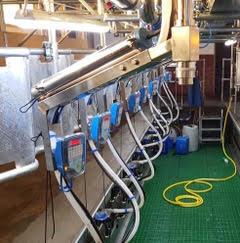Probably Afimilk’s northernmost installation, at latitude 66 degrees. Our customer is located close to Kalix, 1000 km north of Stockholm. He is milking 100 cows in his stand-alone Swing-Over Herringbone Double 10 milking parlor, 2 milking sessions per day.
